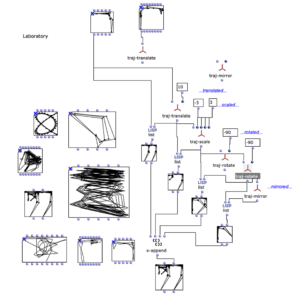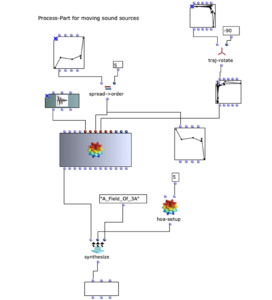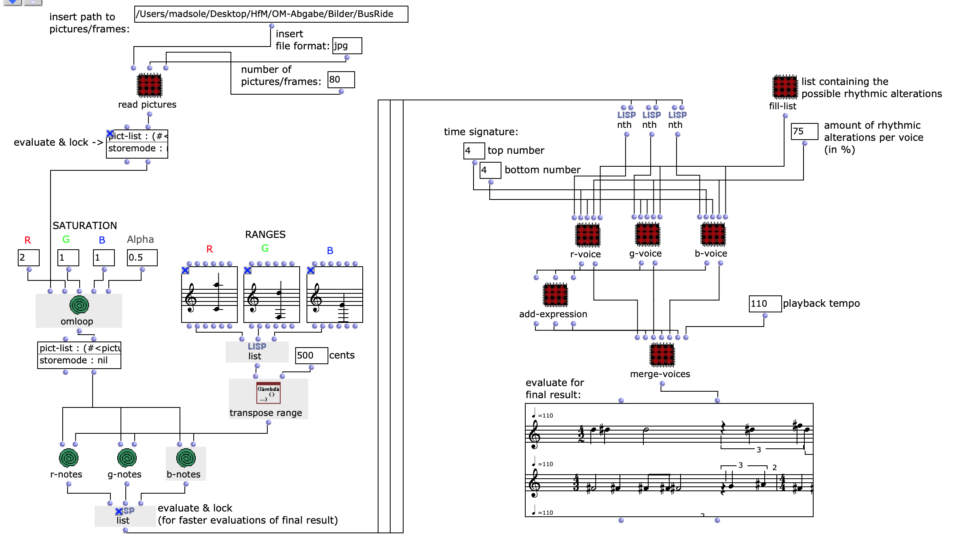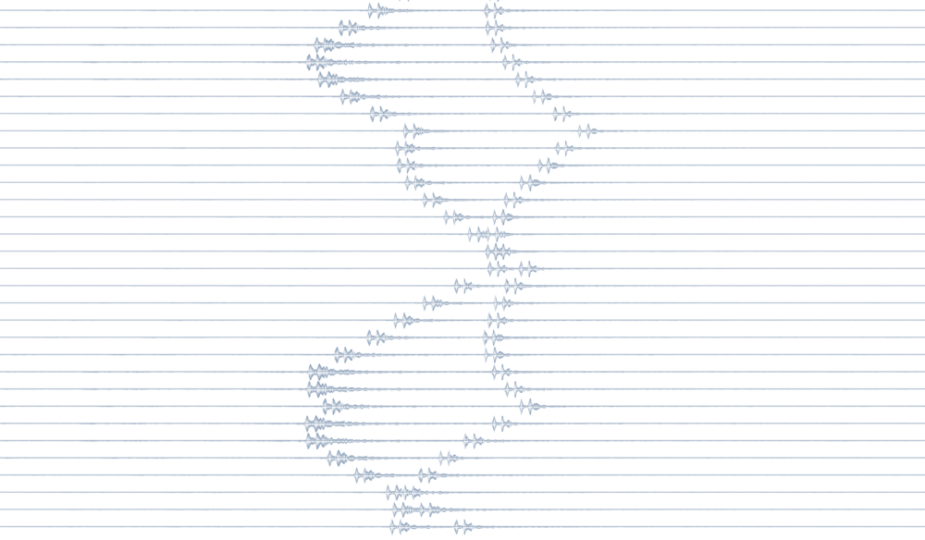Abstract: The entry describes the spatialization of the piece “Ode An Die Reparatur” (“Ode To The Repair”) (2021) and its transformation into a Higher Order Ambisonics version. A binaural mix of the finished piece makes it possible to understand the working process based on the result.
Supervisor: Prof. Dr. Marlon Schumacher
A contribution by: Jakob Schreiber
Piece
The piece “Ode An Die Reparatur” (2021) consists of four movements, each of which refers to a different aspect of a fictional machine. What was interesting about this process was to investigate the transition from machine sounds to musical sounds and to shape it over the course of the piece.
Production
The production resources for the piece were, on the one hand, a UHER tape recorder, which enables simple repitch changes and was predestined for the realization of this piece based on mechanical machines due to its functionality with motors and belts. SuperCollider was also used as a digital sound synthesis and alienation environment.
Structure
The piece consists of four movements.
First movement
The sound material of the beginning is composed of various recordings from a tape recorder, over which clearly audible, synthesized engine sounds are played alongside silence.
Second movement
The sound objects, some of which are reminiscent of birdsong, suddenly emerge from sterile silence into the foreground.
Third movement
The perforative characteristics inside a gearwheel are transformed into tonal resonances in the course of the movement.
Fourth movement
In the last movement, the engines play a monumental final hymn.
Spatialization
Based on the compositional form of the piece, the spatialization drafts adhere to the division into movements.
Working practice
The working process can be divided into different sections, similar to the OM patch. In the laboratory section, I explored different forms of spatialization in terms of their aesthetic effect and examined their conformity with the compositional form of the existing piece.

In order to determine different trajectories, or fixed positions of sound objects, the visual assessment of the respective trajectories played an important role in addition to the auditory effect.

Ultimately, the parameters of the pre-selected trajectories were supplemented with a scattering curve, finely adjusted and finally transformed into a fifth-order Higher Order Ambisonics audio file via a chain of modules.
Iteratively, the synthesized multi-channel files are added to the overall structure in REAPER and their effect is examined before they are run through the synthesis process again with an optimized set of parameters and trajectories.
More details on the individual sentences
First, you can listen to the binaural version of the spatialized piece as a whole. The approaches of the individual parts are described briefly below
First sentence
In the first part, the long, drawn-out clouds of sound, lying on top of each other like layers, move according to the basic tempo of the movement. The trajectories lie in a U-shape around the listening area, covering only the sides and front.
Second movement
Individual sound objects should be heard from very different positions. Almost percussive sounds from all directions of the room make the listener’s attention jump.
Third movement
The sonic material of this part is a sound synthesis based on the sound of cogwheels or gears. The focus here was on immersion in the fictitious machine. From this very sound material, resonances and other changes create horizontal tones that are strung together to form short motifs.
The spatialization concept for this part is made up of moving and partly static objects. The moving ones create an impression of spatial immersion at the beginning of the movement. At the end of the movement, two relatively static objects are added to the left and right of the stereo base, which primarily emphasize the melodic aspects of the sound and merely oscillate fleetingly on the vertical axis at their respective positions.
Fourth movement
The instrumentation of this part of the piece consists of three simulations of an electric motor, each of which follows its own voice. In order to separate the individual voices a little better, I decided to treat each of the four motors as an individual sound object. To support the monumental character of the final part, the objects only move very slowly through the fictitious space.



About the author